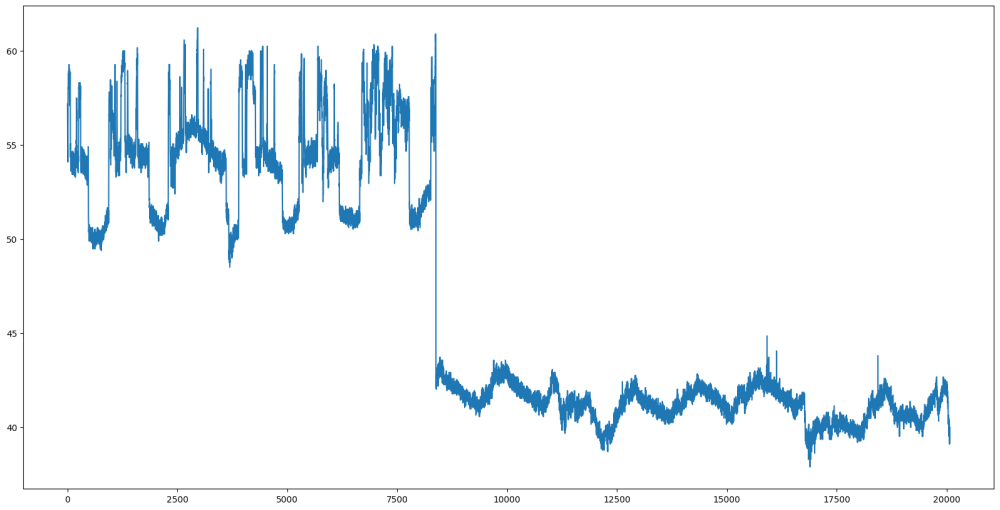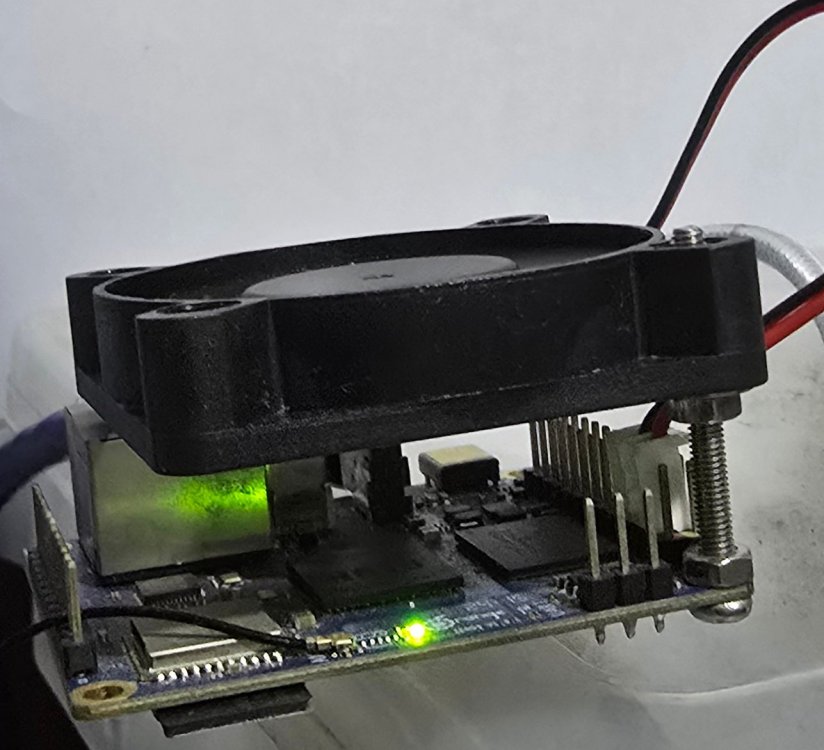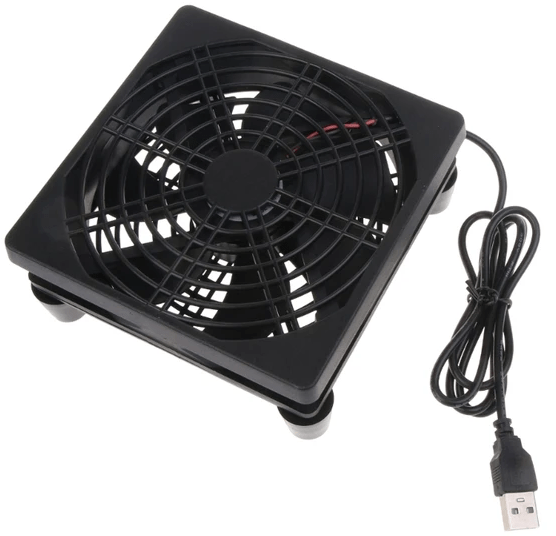Active threads
Showing topics posted in for the last 365 days.
- Today
-

Efforts to develop firmware for X96 X6 RK3566 (8G/64G)
Chris4arm replied to loi xin's topic in Rockchip CPU Boxes
I use the Station M2 image with dtb joined. Adapt fdtfile entry in /boot/armbianEnv.txt as needed. rk3566-box-demo_x96x6_24-custom.dtb -
I get it: DDR Version V1.10 20190926 In ID:0xFFF 330MHz LPDDR3 Bus Width=32 Col=10 Bank=8 Row=15 CS=2 Die Bus-Width=32 Size=2048MB mach:14 rd addr 0xC0000000 = 0xFFED ERR
-

Desktop not showing Armbian 25.5.1 Noble Gnome, Orange Pi 5
compent replied to compent's topic in Orange Pi 5
I had a look in /var/log/gdm3/, which was originally denying me permission but after obtaining access, it is empty, so no GDM log, as least in this folder. I also edited custom.conf to enable GDM logs but it had no effect. I was curious to know why there is a GDM3 folder, rather then GDM. -
Boring? To learn and have discussions? Strange sentiment. About bcachefs, for your sake, let's hope Linus Torvalds goes back on his comment that he and Kent will split ways in kernel 6.17 then so you won't have to rely on dkms for your unstable filesystem. bcachefs is in beta and should not be used as primary filesystem. Linux kernel mailing list: https://lore.kernel.org/all/CAHk-=wi+k8E4kWR8c-nREP0+EA4D+=rz5j0Hdk3N6cWgfE03-Q@mail.gmail.com/ No, it's impossible to have the same UUID on two btrfs systems at the same time, you can't even format a btrfs system and give it the same UUID, the kernel won't let you. See btrfs documentation: https://btrfs.readthedocs.io/en/latest/Send-receive.html So you are lying for some reason. Maybe the same reason you "don't read links". xD Has nothing to do with "trust", it has to do with how COW and send|receive works witch you don't seem to understand/ignore. And ofc an rsync (suddenly you talk about rsync instead of btrfs send -p) will work, it just checks if the files are changed and update them if necessary, witch is exactly what I have been saying is the better way for backups the whole time. IMHO it's even better to just create the subvolume(s) and rsync from the first run altogether if you want a backup, send|receive is not necessary and is just slow. And in the case of a complete backup incl boot like shrink-backup does by dd:ing the "boot sector" (witch includes potential boot partition), all that has to be done is make sure configs point to the new UUID (in case of rpi derivative systems nothing has to be done, because they use PARTUUID witch can be the same in contrast to UUID). If you "don't want to click links" to learn, I won't pressure you. You already seem triggered for some reason. But for others that might read this I hope my knowledge about backup strategies came through. Again, snapshots are perfect for rollbacks, but NOT for backups. Have a good Saturday.
-
@ScoreABSM Sorry I had to revert that PR. It seemed to initially work, but in the end it started hitting fails more than it functioned. https://github.com/armbian/build/pull/8344 I'm still on the case.
-
Hi im having problems when booting armbian on my OPI5P it is just blinking green and not showing a picture. I am using this version of Armbian: Armbian_25.5.1_Orangepi5-plus_noble_current_6.12.28_gnome_desktop.img and I have tried it on all boot media i have available (NVME, USB and SD card) but none worked. Sorry if there are any gramatical errors, I am from germany and my english isnt the best.
-

No Audio on Kernel: 6.12.15 and Armbian 25.2.2 Bookworm Minimal
brentr replied to Truenox's topic in Radxa Rock Pi S
Look for a PR in the next few days - Yesterday
-
I confirm that this repository ffmpeg works for me: * Linux Edge 6.15.0 * self built image with Debian Trixie and Xfce desktop * running in X11 mode * follow all the instructions in original post Then, to make it work with an ili9488 LCD, I needed to change these: * install LCD DTS, firmware, remove plymouth * I can't make X11 work with my LCD driver panel-mipi-dbi-spi recently... (still investigating how it worked before) * but I can make it work with labwc and sway * install seatd and labwc * Choose labwc instead of xfce in lightdm login * from SSH session: DISPLAY=:0 foot& * in foot (labwc's terminal): mpv videofile.mpv
-
Whatever garbage ones I can find on ebay for cheap. In this case: KIOXIA 256GB SSD BG5 M.2 2230 NVMe PCIe Gen4 x4 KBG50ZNS256G https://www.ebay.com/itm/176432690192
-

Armbian for an old Allwinner A10 tablet
Ryzer replied to thewiseguyshivam's topic in Allwinner sunxi
Ok the backlight turning on confirms that it uses PWM0. It is worth noting at this point that PWM works but is not perfect on the A10 as the pwm-sun4i driver assumes all devices are 16-bit resolution however only the lower 8-bits are only valid on the A10. Looking into this again it would probably make it easier for yourself to include the panel parameters within the DTS as well. As mention earlier the "starry,kr070pe2t" is included within panel-simple.c. What is the current output of sudo dmesg | grep drm? I am curious to see if there is even an attempt to bind the panel. All the best Ryzer -
do you have correct permissions? maybe run as root on my rock3a content is fine but got [Jul 4 20:19] warn_alloc: 19 callbacks suppressed [ +0.000026] dec0:0:hevc_rkm: page allocation failure: order:5, mode:0x40dc0(GFP_KERNEL|__GFP_COMP|__GFP_ZERO), nodemask=(null),cpuset=user.slice,mems_allowed=0 [ +0.000115] CPU: 2 PID: 2339021 Comm: dec0:0:hevc_rkm Not tainted 6.1.115-vendor-rk35xx #1 [ +0.000011] Hardware name: Radxa ROCK3 Model A (DT) [ +0.000011] Call trace: [ +0.000008] dump_backtrace+0xf0/0x12c [ +0.000023] show_stack+0x20/0x30 [ +0.000011] dump_stack_lvl+0x7c/0xa0 [ +0.000016] dump_stack+0x18/0x34 [ +0.000010] warn_alloc+0xe0/0x17c [ +0.000012] __alloc_pages+0x524/0x854 [ +0.000010] __kmalloc_large_node+0xb8/0x114 [ +0.000012] __kmalloc+0x4c/0x100 [ +0.000009] __regset_get+0x60/0xd8 [ +0.000013] regset_get_alloc+0x1c/0x28 [ +0.000010] elf_core_dump+0x500/0xbc8 [ +0.000011] do_coredump+0xabc/0x100c [ +0.000012] get_signal+0x1b8/0x634 [ +0.000013] do_notify_resume+0x194/0xda8 [ +0.000010] el0_da+0x5c/0x70 [ +0.000012] el0t_64_sync_handler+0xc0/0x13c [ +0.000010] el0t_64_sync+0x19c/0x1a0 [ +0.000013] Mem-Info: [ +0.000010] active_anon:112109 inactive_anon:125820 isolated_anon:0 active_file:31285 inactive_file:45270 isolated_file:0 unevictable:0 dirty:2210 writeback:0 slab_reclaimable:16665 slab_unreclaimable:16446 mapped:15455 shmem:105 pagetables:1861 sec_pagetables:510 bounce:0 kernel_misc_reclaimable:0 free:82604 free_pcp:125 free_cma:35560 [ +0.000022] Node 0 active_anon:448436kB inactive_anon:503280kB active_file:125140kB inactive_file:181080kB unevictable:0kB isolated(anon):0kB isolated(file):0kB mapped:61820kB dirty:8840kB writeback:0kB shmem:420kB writeback_tmp:0kB kernel_stack:4192kB pagetables:7444kB sec_pagetables:2040kB all_unreclaimable? no [ +0.000017] DMA free:330416kB boost:14364kB min:19988kB low:21964kB high:23940kB reserved_highatomic:2048KB active_anon:448188kB inactive_anon:503568kB active_file:125312kB inactive_file:181216kB unevictable:0kB writepending:8840kB present:2095104kB managed:2014252kB mlocked:0kB bounce:0kB free_pcp:544kB local_pcp:0kB free_cma:142240kB [ +0.000018] lowmem_reserve[]: 0 0 0 0 [ +0.000015] DMA: 20626*4kB (UMEHC) 16291*8kB (UMEHC) 4462*16kB (UMHC) 1263*32kB (UMHC) 92*64kB (MHC) 0*128kB 0*256kB 0*512kB 0*1024kB 0*2048kB 0*4096kB = 330528kB [ +0.000049] Node 0 hugepages_total=0 hugepages_free=0 hugepages_surp=0 hugepages_size=1048576kB [ +0.000010] Node 0 hugepages_total=0 hugepages_free=0 hugepages_surp=0 hugepages_size=32768kB [ +0.000008] Node 0 hugepages_total=0 hugepages_free=0 hugepages_surp=0 hugepages_size=2048kB [ +0.000009] Node 0 hugepages_total=0 hugepages_free=0 hugepages_surp=0 hugepages_size=64kB [ +0.000008] 129311 total pagecache pages [ +0.000007] 52636 pages in swap cache [ +0.000006] Free swap = 11240188kB [ +0.000007] Total swap = 11792380kB [ +0.000006] 523776 pages RAM [ +0.000006] 0 pages HighMem/MovableOnly [ +0.000006] 20213 pages reserved [ +0.000007] 135168 pages cma reserved command used /usr/share/jellyfin-ffmpeg/ffmpeg -y -c:v hevc_rkmpp -i 2025-06-29_22-05_rec.ts -map v -c:v h264 _rkmpp -b:v 8000k -map 0:1 -c:a copy -t 300 dvbt2.h264.ts
-
I have a BananaPi M1, same SoC, same kernel (the upgrade went fine for me last week). Although I only use it for its SATA connector (big HDD as NBD, OS on SD-card), audio 3.5mm plug did work. Maybe I could see what mine does, but rather with a default Debian player, like mpv, works via ssh CLI. I can generate some FLAC file, but I don't want to search for the specific song/title. Also I could do a temp exfat on a loopdev or so or just play from NFS, Btrfs or Ext4 loopdev.
-

T95Z Plus (Second one) running great
Tomas Catone replied to Tomas Catone's topic in TV Boxes running Armbian
Good to meet a fellow armbian android tv box fan. We need a logo or shorthand alias for fans 🤣. ZFS - was easy but not clear. Inside armbian-config under System/Storage is a script to install ZFS support. I did this and it didn't work... then undid it and then installed it a second time and it worked. Somewhere in there I also ran the standard commands for install: sudo apt install zfsutils-linux sudo apt install zfs-fuse Probably after the first uninstall... but the commands indicate failure. But then installing the second time seemed to work. Did that on both of these boxes I have working. Thanks for the ethtool command. Here's my results on box1 ports auto-negotiation: Yes Supported FEC modes: Not reported Advertised link modes: 10baseT/Half 10baseT/Full 100baseT/Half 100baseT/Full 1000baseT/Full Advertised pause frame use: Symmetric Receive-only Advertised auto-negotiation: Yes Advertised FEC modes: Not reported Link partner advertised link modes: 10baseT/Half 10baseT/Full 100baseT/Half 100baseT/Full 1000baseT/Full Link partner advertised pause frame use: Symmetric Receive-only Link partner advertised auto-negotiation: Yes Link partner advertised FEC modes: Not reported Speed: 1000Mb/s Duplex: Full Auto-negotiation: on master-slave cfg: preferred slave master-slave status: slave Port: Twisted Pair PHYAD: 0 Transceiver: external MDI-X: Unknown netlink error: Operation not permitted Current message level: 0x0000003f (63) drv probe link timer ifdown ifup Link detected: yes Not an expert and first time reading this command but looks like 1000 is the answer. Crazy thing - box 2 does not have the line "MDI-X: Unknown" shown towards the bottom and "Port: MII" instead of "Port: twisted pair" but is otherwise identical. Posting in case it helps anyone else - but these are beyond me. If you confirm that the above = 1000 I will update both my box running posts. By the way - Another favorite is Software/Management/Cockpit. Easy to see how the server is doing. Plus it has a built in terminal and file manager. Add that to Tailscale and you can check on the server or grab a file while out of the house. curl -fsSL https://tailscale.com/install.sh | sh Those are my favorites. What are yours? -
The way I understand it is that you only need the full firmware package in a few exceptional circumstances. What is the wifi chipset on your SBC? Do you have the wireless-regdb package installed? "dpkg -l wireless-regdb"
-
Thank you for sharing. Would be good to have your findings corroborated by some of official documentation. Thanks again for sharing.
-

Rolling Release and Kernel update concern
laibsch replied to Tomas Catone's topic in Amlogic CPU Boxes
If they boot, I wouldn't worry about any difference. -
sounds good. good luck and keep us posted!
-
this is somewhat 'off-topic' but still relevant to 'orange pi zero 3' If Orange Pi Zero 3 is operated in warm climates (e.g. room temperature 30 deg C etc) , it can at times run up to like 60 deg C. this is in open still air adding a fan blowing at it reduce that by some 20 deg C to 40 deg C ! And this is my ghetto fan setup, no fancy case, no heatsink nothing, just a single long machine screw that lifts it up checking temperatures is easy > armbianmonitor -m Stop monitoring using [ctrl]-[c] Time CPU load %cpu %sys %usr %nice %io %irq Tcpu C.St. 18:03:39 480 MHz 0.00 0% 0% 0% 0% 0% 0% 40.8 °C 0/7^C strictly speaking, 60 deg C is 'nothing to scream about' , I've a Rpi 4 hitting up 80 deg C and it throttles. similarly use a fan blowing at it + a heat sink over the cpu, drastically reduce running temperatures. for 'occasional' use, I don't think it is necessary to have a fan blowing at the Orange Pi Zero 3. I think it is feasible to run at lower temperatures if I disable and unclock the GPU and HDMI, but for now I'm not sure how to go about doing that. Initially, I'm thinking maybe the wifi is causing it, but now I don't think so, it is moderately likely the gpu is heating it up a bit. And still air don't seem to dissipate heat very well.
-

NanoPi neo AIR no avalible COM port when connect to PC after update
Dandaman46 replied to Aknot's topic in Beginners
Hello @Aknot, better late than never? This is likely because USB OTG support is on out of the box now. You used to have to add an overlay to get it to work. You will need to modify the the overylays to change this. -
I disassembled my tv box - there are 4 screws under the 4 rubbery feet. Removed the motherboard and I drilled some holes of 1/4 inch (7 mm) diameter through the bottom plastic piece. Then I placed a USB fan underneath the tv box and wow the temperature really goes down and stays down around 45 C to 60 C depending on work load. The fans are 80mm and 120mm in size. I chose 120mm to be sure.
- Last week
-

Building Armbian Distribution with Kernel 6.10 for Orange Pi 5 Pro
C127 replied to Sergey Dulimov's topic in Rockchip
Hello everyone. @salas I have just implemented the out-of-box (OOB) network driver functionality in a new commit to the repository. This should serve as a temporary patch for now (or potentially a permanent one, depending on if/when the driver gets mainlined into the Linux kernel). @whywontitwork Thank you very much for the feedback and for testing the image. I need a bit more information to help track down the issue. My suspicion is that the system is successfully loading u-boot but failing to load the kernel. However, without debug logs, it's difficult to know the real cause. To help diagnose this, could you please tell me how you flashed the image? I flash my builds to a microSD card using the Balena Etcher software. Are you using the same method or a different one? I appreciate your support in getting the Orange Pi 5 Pro maintained! One of my main motivations for starting this project was to get Panthor support for the Mali GPU too. I can confirm that on my end, with the image I've built, the latest version of the drivers works correctly. Getting Vulkan and OpenGL running on an RK3588 board! -
Well its equivalent so other than vendor not beeing in a database does not count as custom in my books, but that is beside the point. Armbian correctly recognizes the size and I can write to it and that is important. Now flashing an existing image is simple. My preferred way is dd as described by Piter75: dd if=uboot.img of=/dev/mtdblock0 bs=4K for u-boot images and dd if=idbloader.img of=/dev/mtdblock0 seek=64 bs=512 conv=sync dd if=u-boot.itb of=/dev/mtdblock0 seek=16384 bs=512 conv=sync if used with image tree blob. Nice thing is that if new u-boot hangs or does not boot I can just short pin 23-25 to boot from SD card and try again. Since I have an 8Mb flash I would really like to bake in m.2 to SATA drivers - for ASM1166 in my case. Any pointers are welcome. DeMo







